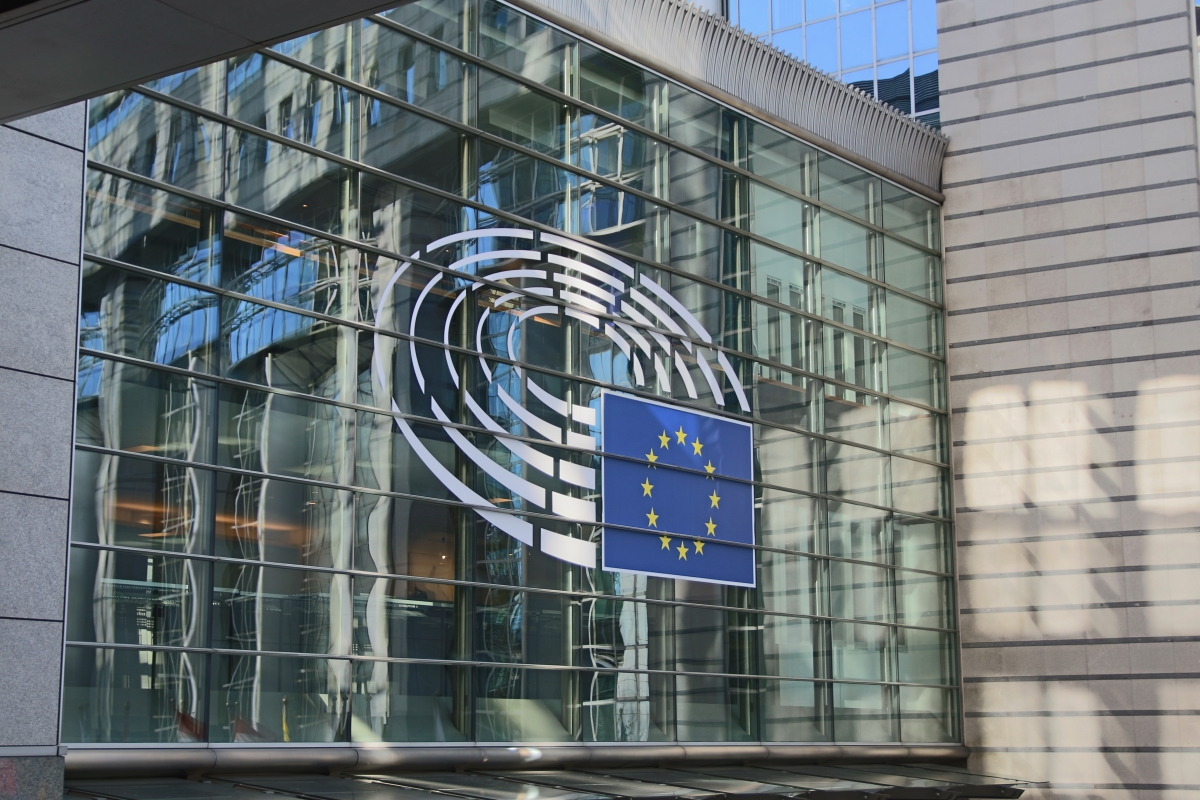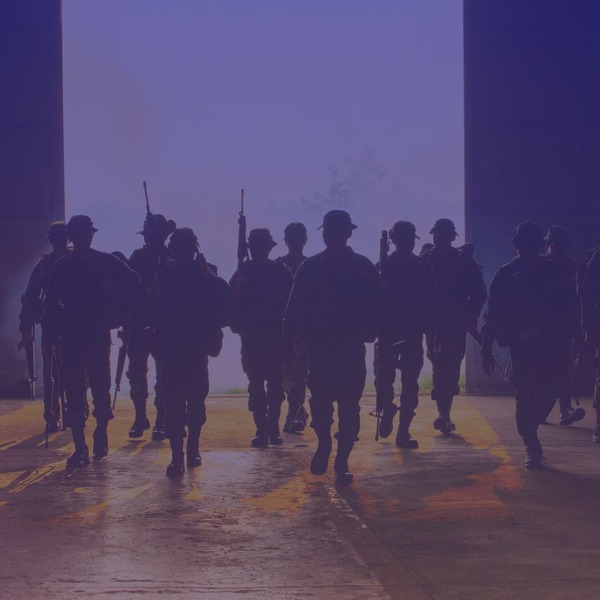
Written by Phuong Pham
Under the intensification of the US-China rivalry in the Indo-Pacific, the EU has recently begun gravitating towards this region. Indeed, this “European pivot” was spearheaded by two of the most crucial powers of the Union: Germany and France (Aneja, 2020). The EU has long been considered as a normative power (Sjursen, 2006), due to its ability to establish norms with which it influences other powers. Certainly, the EU has the potential to be a normative power in the Indo-Pacific in the upcoming future.
The EU as a “Normative Power”
The international relations (IR) literature substantially reviews the notion of “normative power,” given its vital importance in understanding global politics. According to constructivists, this notion is mostly associated with constructivism as a core concept to decipher the world of IR (Barnett & Duvall, 2005; Finnemore, 1996; Wendt, 1992). Thus, a normative power, in the broadest term, can be defined as one that is able to establish sets of regulations or standards for other powers to follow, or in other words, to “shape conceptions of normal” (Keene, 2013; Manners, 2002, p. 240; Nye, 1990).
The most relevant article regarding the EU as a normative power is perhaps the one written by the Professor Manners. He asserts that in “the notion of a normative power, Europe is located in a discussion of the ‘power over opinion,’ … and the desire to move beyond the debate over state-like features through an understanding of the EU’s identity. Effectively, a series of principles and shared beliefs that the member states adhere to and set an example with” (Manners, 2002, p. 239). Accordingly, there are four grand principles, or norms, that are enshrined in the EU’s body of law, including the centrality of peace, liberty, democracy, supranational rule of law, and human rights. Four minor norms are also identified: social solidarity, anti-discrimination, sustainable development, and good governance. In retrospect, EU members have been strongly adhering to these norms, which makes a coherent and strong European bloc. Indeed, the EU has long been regarded as a symbol of regional integration (Cameron, 2010), showcased by its membership expansion over the past decades and its economic achievements. Despite facing numerous issues hampering its integration, the EU is still the most successful regional institution in the world, due to its normative ability, creating norms and effectively spreading them to its Member States.
Why should the EU be a normative power in the Indo-Pacific region?
Recently, the world has witnessed the emergence of a new regional concept: the Indo-Pacific. What is the Indo-Pacific? Despite becoming increasingly popular in geopolitical terms, this notion has been associated with one definition, due to its contentious nature: it can refer to the confluence of two major oceans, the Indian and the Pacific. This includes most of the great powers in the world, such as China and the United States. The Indo-Pacific is thus able to better represent the geopolitical trend and the changing balance of power in Asia than the old concept “Asia-Pacific.” Given its large scale and the number of powerhouses located there, the Indo-Pacific is perhaps the most strategically important region in the world now. To this extent, the EU, as a major global power, would have to shift its foreign policy gravity towards the Indo-Pacific. The question is, how can the EU establish its role there? It could be argued that with the regional landscape and the EU’s capacity, it could become a normative power in the region.
Regarding its material power, the EU is undoubtedly a major actor in the world. In 2019, the EU’s gross domestic product (GDP) was €16.4 trillion ($19.9 trillion) (EU, n.d.). Along with China and the US, it is the largest economy worldwide. Nevertheless, it is far from able to compete with them in the regional economy. At a first glance, the EU is not only lagging behind the US and China in terms of GDP, but also in terms of investment and imports (even to other economic powerhouses in the region). Secondly, the US-China intensifying rivalry in the region makes the role of the EU remain in the shadows. Since the US introduction of its “Free and Open Indo-Pacific” Strategy, the great power competition in the region has substantially escalated, with the US-China clash as the main axis. Moreover, they have been dominating the region for a long time. For the US, the predominant power in Asia since 1945, its hegemony hinges on its alliance system, so-called the “hub-and-spoke”, which lies at the core of the regional security architecture (Buzan, 2003; Tow & Taylor, 2010). China is the only peer-competitor of the US in the region (Mearsheimer, 2014), and historically laid in the center of the regional order by establishing the “Tributary system.” Therefore, the EU cannot have a degree of influence as large as the US and China in the region. Notwithstanding these factors, the EU can still play a greater role in the Indo-Pacific due to its normative ability, as mentioned previously.
Most Indo-Pacific countries have been seeking to establish a rules-based regional order (Hiep, 2018; Rosenblum, 2018; Valencia, 2018). This highly dovetails the EU’s norms and values, paving the way for its increasing normative involvement in the Indo-Pacific. For example, Germany, arguably the most influential power in the EU, says in its policy guidelines that it seeks to promote an European Indo-Pacific strategy that can make “an active contribution to shaping the international order in the Indo-Pacific” (The Federal Government, 2020). To this extent, it is clear that the EU is making a great effort to normatively engage in the Indo-Pacific region. Granted, despite not having a common Indo-Pacific strategy up to now, the EU sees this region as its strategic partner, and intends to strengthen its cooperation with its countries. Additionally, one of the core tenets of a rules-based Indo-Pacific order is maritime security, which the EU and some Indo-Pacific countries have been actively promoting. The European Union, as a global maritime trading power, is dependent on the “Free and Open Indo-Pacific” maritime route, which entails the increase of the Union’s norm-constructing activities in the region. As to the Indo-Pacific powers, due to the rising aggressiveness of China on the South China Sea, they expect a greater EU commitment for the sake of a stable maritime order. In these regards, the EU has a good chance of cooperating with Indo-Pacific actors to build a rules-based order in accordance with its grand principles, turning itself into an influential normative power.
Furthermore, under the current regional landscape, the EU may be able to play a greater normative role in the Indo-Pacific. Although countries in this area have been witnessing a remarkably increasing level of regional integration over the past decades, they do not reach the European ones. The regionalism has been substantial, illustrated by the relative ineffectiveness of major actors in laying a foundation for it. The “linchpin” of Asian regionalism, ASEAN, is far from efficient. On the surface, ASEAN lies at the heart of the network of regional institutions (Acharya, 2007), making it institutionally and normatively central. In fact, ASEAN-centrality is mostly something that “exists on paper” (Jones, 2010, p. 96). It has introduced “ASEAN-Way” as a core norm that underpinned the operation of ASEAN-centric regional institutions. This concept refers to a set of diplomatic norms among ASEAN’s members associated with principles such as informality, consultation, non-interference, non-violence, consensus, and so on (Acharya, 1997; Johnston, 1999; Jones, 2016; Katsumata, 2003). Nevertheless, due to its lack of material power, ASEAN is unable to utilize the ASEAN-Way as a means to establish an ASEAN-centric normative order. However, the EU can, in some aspects, leverage its normative role in the region. The EU has been highly praised for its normative achievements so it can, to a certain degree, cooperate with ASEAN to facilitate the Indo-Pacific regionalism. The EU would become a full-fledged normative power in this region, and it should be in that position given what it has done so far and its normative success.
Conclusion
To sum up, while pivoting to the Indo-Pacific region, the EU, due to its ability to establish and maintain its norms in Europe, can become normatively essential for the Indo-Pacific order. Despite encountering a number of challenges in establishing its sphere of influence in this region, the European Union is enjoying numerous opportunities to engage more actively in shaping the Indo-Pacific normative order. Thus, increasing the normative engagement would be an indispensable part of the EU’s Indo-Pacific strategy.
References
Acharya, A. (1997). Ideas, Identity, and Institution‐building: From The ‘ASEAN way’ to the “Asia‐Pacific way’’’?”’ The Pacific Review, 10(3), 319–346.
Acharya, A. (2007). Regional Institutions and Security in the Asia-Pacific: Evolution, Adaptation, and Prospects for transformation. Reassessing Security Cooperation in the Asia-Pacific: Competition, Congruence, and Transformation, 19–40.
Aneja, A. (2020). Europe Pivots Towards Indo-Pacific Amid Row with China.
Barnett, M., & Duvall, R. (2005). Power in International Politics. International Organization, 59(1), 39–75.
Buzan, B. (2003). Security architecture in Asia: The interplay of regional and global levels. Pacific Review, 16(2), 143–173. https://doi.org/10.1080/0951274032000069660
Cameron, F. (2010). The European Union as a model for regional integration. Council on Foreign Relations, 1–8.
EU (n.d.). European Union. Retrieved October 27, 2020, from https://europa.eu/european-union/about-eu/figures/economy_en
Finnemore, M. (1996). National Interests in International Society. Ithaca, NY: Cornell University Press.
Hiep, L. H. (2018). American’s Free and Open Indo-Pacific strategy: A Vietnamese perspective. ISEAS Perspective, 43.
Johnston, A. I. (1999). The Myth of the ASEAN Way? Explaining the Evolution of the ASEAN Regional Forum. Imperfect Unions: Security Institutions over Time and Space. Oxford University Press Oxford.
Jones, L. (2010). Still in the “Drivers’ Seat”, But for How Long? ASEAN’s Capacity for Leadership in East-Asian International Relations. Journal of Current Southeast Asian Affairs, 29(3), 95–113.
Jones, L. (2016). Explaining the Failure of The ASEAN Economic Community: The Primacy of Domestic Political Economy. The Pacific Review, 29(5), 647–670.
Katsumata, H. (2003). Reconstruction of Diplomatic Norms in Southeast Asia: The Case for Strict Adherence to the” ASEAN Way”. Contemporary Southeast Asia: A Journal of International and Strategic Affairs, 25(1), 104–121.
Keene, E. (2013). Social status, social closure and the idea of Europe as a ‘normative power.’ European Journal of International Relations, 19(4), 939–956.
Manners, I. (2002). Normative power Europe: a contradiction in terms? JCMS: Journal of Common Market Studies, 40(2), 235–258.
Mearsheimer, J. J. (2014). Can China rise peacefully? The National Interest, 25, 23–37.
Nye, J. S. (1990). Soft Power. Foreign Policy, (80), 153–171.
Rosenblum, D. (2018). The United States and the Indo-Pacific Region. Retrieved March 20, 2019, from https://www.state.gov/p/sca/rls/rmks/2018/277742.htm
Sjursen, H. (2006). The EU as a ‘normative’ power: how can this be? Journal of European Public Policy, 13(2), 235–251.
The Federal Government. (2020). Policy guidelines for the Indo-Pacific.
Tow, W. T., & Taylor, B. (2010). What is Asian security architecture? Review of International Studies, 36(1), 95–116.
Valencia, M. J. (2018). What Does a ‘Free and Open Indo-Pacific’ Actually Mean. Retrieved March 30, 2019, from https://www.livemint.com/Politics/DFPYeUMtS6hvVbHKNgxzcJ/China-hopes-Quad-meet-at-Asean-summit-not-directed-against-i.html
Wendt, A. (1992). Anarchy Is What States Make of It: The social Construction of Power Politics. International Organization, 46(2), 391–425.

 Is EU citizenship for sale – or for keeps? A critical analysis of the CJEU’s Golden Visa ruling.
Is EU citizenship for sale – or for keeps? A critical analysis of the CJEU’s Golden Visa ruling.  The European Union in Space: From exploration and innovation to security and autonomy
The European Union in Space: From exploration and innovation to security and autonomy  The Rise of the Right: The Threat Right-Wing Extremism Poses to Women and Feminist Efforts in Germany
The Rise of the Right: The Threat Right-Wing Extremism Poses to Women and Feminist Efforts in Germany  The silent shield – how special operations safeguard the global supply chain
The silent shield – how special operations safeguard the global supply chain 


